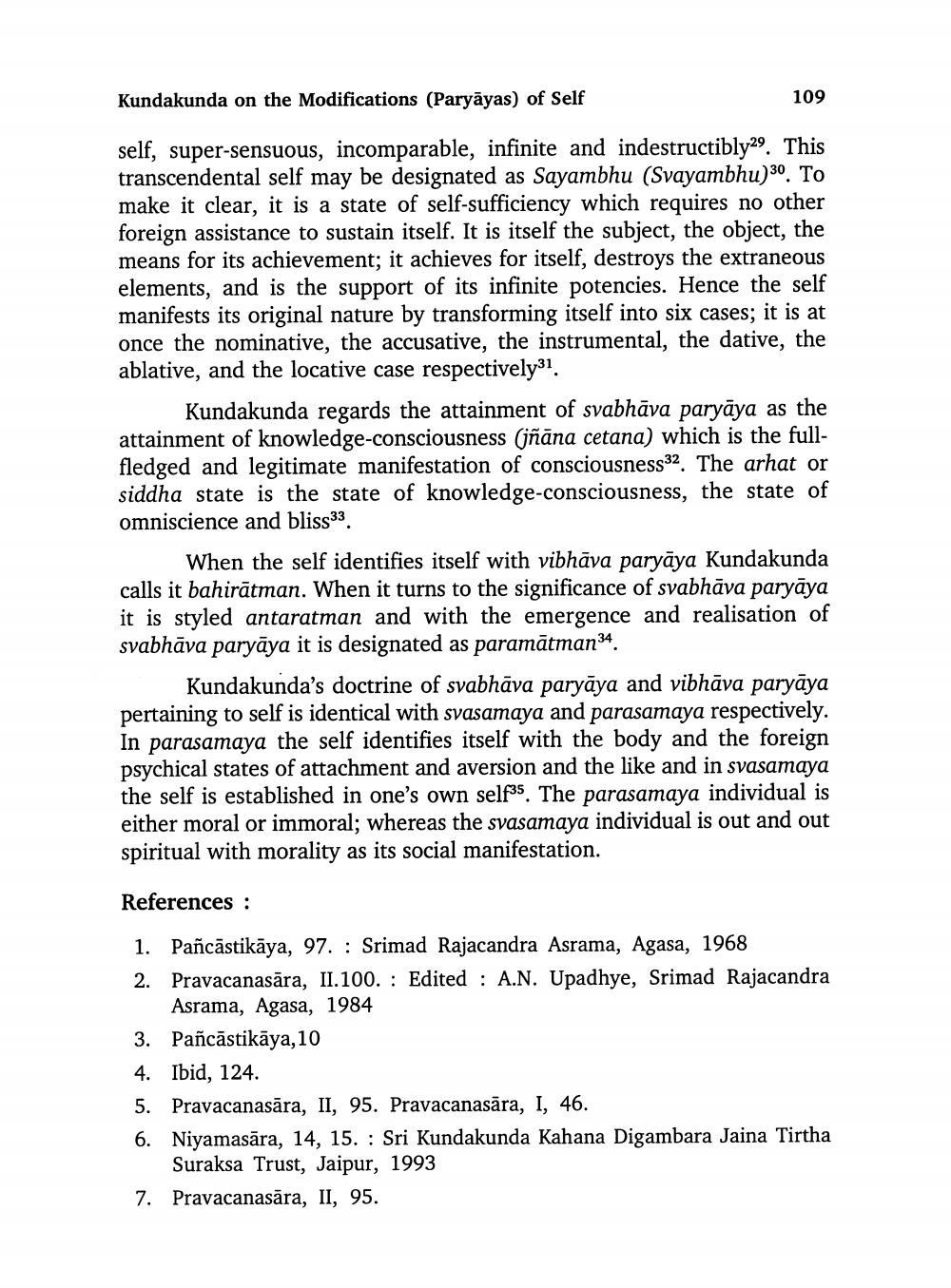________________ Kundakunda on the Modifications (Paryayas) of Self 109 self, super-sensuous, incomparable, infinite and indestructibly29. This transcendental self may be designated as Sayambhu (Svayambhu)30. To make it clear, it is a state of self-sufficiency which requires no other foreign assistance to sustain itself. It is itself the subject, the object, the means for its achievement; it achieves for itself, destroys the extraneous elements, and is the support of its infinite potencies. Hence the self manifests its original nature by transforming itself into six cases; it is at once the nominative, the accusative, the instrumental, the dative, the ablative, and the locative case respectively31. Kundakunda regards the attainment of svabhava paryaya as the attainment of knowledge-consciousness (jnana cetana) which is the fullfledged and legitimate manifestation of consciousness32. The arhat or siddha state is the state of knowledge-consciousness, the state of omniscience and bliss33. When the self identifies itself with vibhava paryaya Kundakunda calls it bahiratman. When it turns to the significance of svabhava paryaya it is styled antaratman and with the emergence and realisation of svabhava paryaya it is designated as paramatman34. Kundakunda's doctrine of svabhava paryaya and vibhava paryaya pertaining to self is identical with svasamaya and parasamaya respectively. In parasamaya the self identifies itself with the body and the foreign psychical states of attachment and aversion and the like and in svasamaya the self is established in one's own self35. The parasamaya individual is either moral or immoral; whereas the svasamaya individual is out and out spiritual with morality as its social manifestation. References : 1. Pancastikaya, 97. : Srimad Rajacandra Asrama, Agasa, 1968 2. Pravacanasara, II.100. : Edited : A.N. Upadhye, Srimad Rajacandra Asrama, Agasa, 1984 3. Pancastikaya, 10 4. Ibid, 124. 5. Pravacanasara, II, 95. Pravacanasara, I, 46. 6. Niyamasara, 14, 15. : Sri Kundakunda Kahana Digambara Jaina Tirtha Suraksa Trust, Jaipur, 1993 7. Pravacanasara, II, 95.




